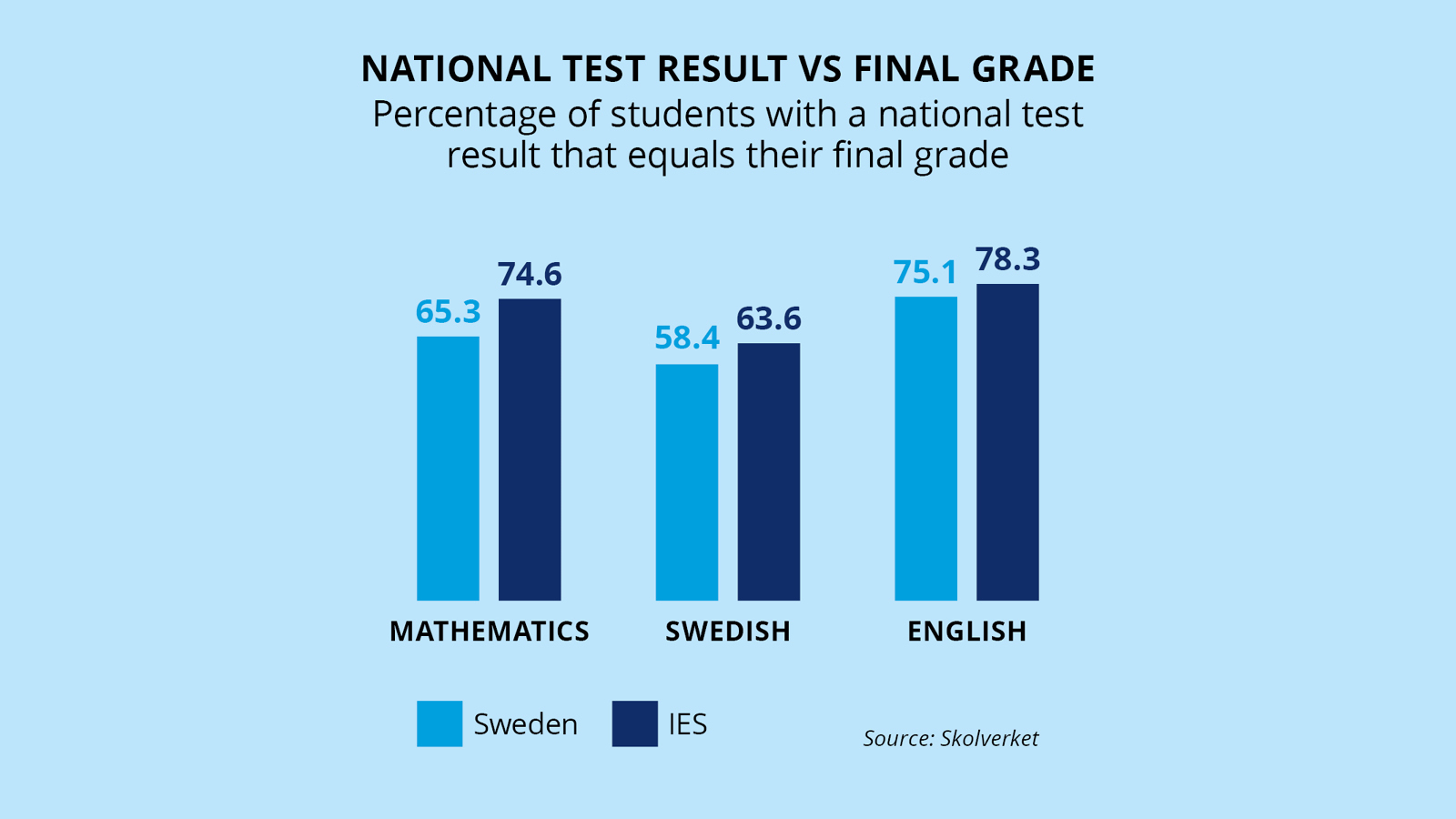News | 27 April 2023
The way IES works with integrity in grading continues to be successful
Integrity in grading is a major priority of IES’ systematic quality work. In 2021, we introduced a new type of statistics database, which the individual IES schools and IES centrally use to evaluate, compare and analyse grading.

Any deviations in grades compared to the results in the national tests, and any deviations compared to the IES average and municipal and national averages, are examined to ensure that the teachers grade correctly.
Every teacher has been granted the authority to set grades and IES supports them in this by providing the right conditions for teachers to make fair assessments. To help teachers and ensure grades are set fairly, we have set up an internal moderation process between subject teachers from IES schools, in which the subject teachers compare student work before setting grades, so as to increase the chances of fair grading. In addition, specific subject managers are tasked with coordinating the quality of teaching and grading between the schools. Further training in this area is also held for the academic managers of the schools.
IES teachers that have a foreign teaching degree receive specific support for grading. The heads of departments and academic managers in each school are responsible for ensuring that new teachers from other countries quickly gain an understanding of the Swedish system of grading and the Swedish national curriculum.
In several places around the country, IES has also started to collaborate with municipal schools to compare grading and learn from each other. Results in the national tests also serve as a guideline for grading and are specifically taken into account when teachers give grades. The Swedish Schools Inspectorate (Skolinspektionen), which conducts regular audits of the grading work of school operators, has also confirmed that IES’ grading works well. IES was one of the school operators audited as part of the report How school operators promote fair and equal grading in compulsory schools (Huvudmans arbete för att främja rättvisande och likvärdiga betyg i grundskolan) published in December 2021. In that report, the Schools Inspectorate’s assessor stated that IES as a school operator “implements measures of high quality to create the conditions for fair and equal grading”.

Source: Swedish National Education Agency (Skolverket) 2021/2022
The updated national curriculum, that was introduced in autumn 2022 – LGR22 – contains fewer value-related words in the grading criteria. It is believed that this should make grading easier in the future, and also allow teachers to focus more on student learning and on teaching situations.
National tests
IES closely monitors each student’s national test results. This is an important part of our quality improvement work, and ensures that students develop the knowledge and skills they need for the future.
In both the 2019/2020 and 2020/2021 academic years, the Swedish National Agency for Education decided to cancel the national tests due to the pandemic. National test data is therefore not available for the previous year. The National Agency for Education offered all schools in the country a voluntary replacement test for the national test. IES recommended that all of its schools carry out these tests, but no statistics are available as the tests were voluntary. IES increased its focus on moderation of work in all subjects to ensure integrity in grading in our schools. During regional meetings, workshops focused on grading were held for IES academic managers, and IES subject specialists also increased their level of support to teachers.
In the academic year 2021/2022, students in years three, six, and nine once again took the national tests. The National Agency for Education’s statistics based on the year nine results in the tests demonstrate that IES works successfully to ensure accurate and fair grading. In Swedish, mathematics, Swedish as a second language and English, there was greater consistency between final grades and the results in the national tests for IES students than the national average (see graphs on page 13). The percentage of students who were graded higher than their result in the national test is also lower than the national average. The percentage of IES students whose test result is consistent with their final grade has also increased since the national test was taken in the 2018/2019 academic year. Furthermore, a greater percentage of IES students pass the national test compared to the rest of the country.
When it comes to the national tests, IES students have always performed better on average than the national averages. As an example, 62 per cent of IES students were awarded grades A-C in the year nine national tests in Swedish in 2022, compared with the national average of 48 per cent.
IES has advocated for a central system of grading for many years now, which we hope will soon be put in place. Until then we will continue to implement systematic cooperation between our IES schools on moderation of the national tests.
In subjects for which there are no national tests, such as technology, crafts, art, music and home economics, each school submits its preliminary grades one month prior to grading. The purpose of this is to see the distribution of the grades and identify any deviations. If deviations are noticed, the relevant school is asked to further analyse the situation.
To read the full quality report, click here.